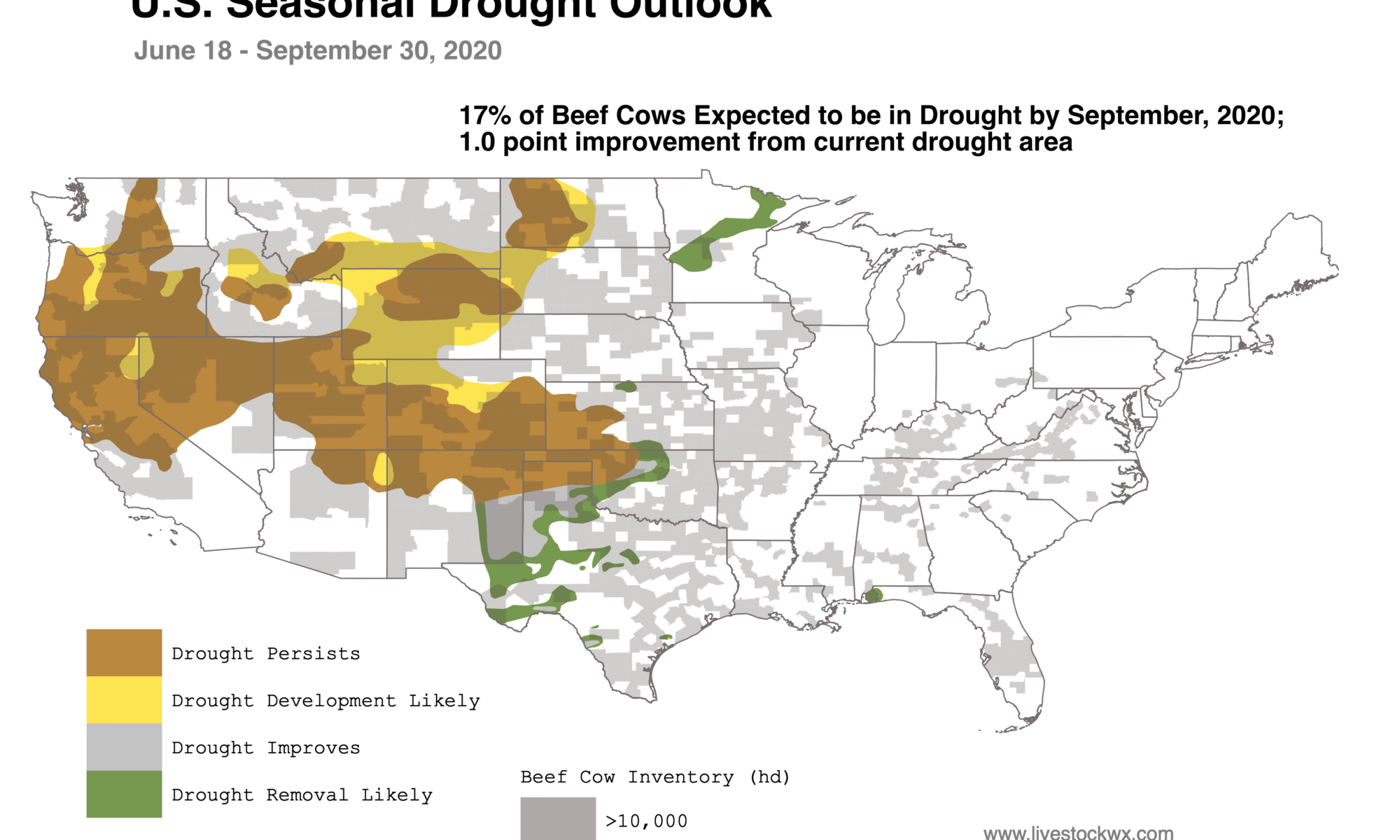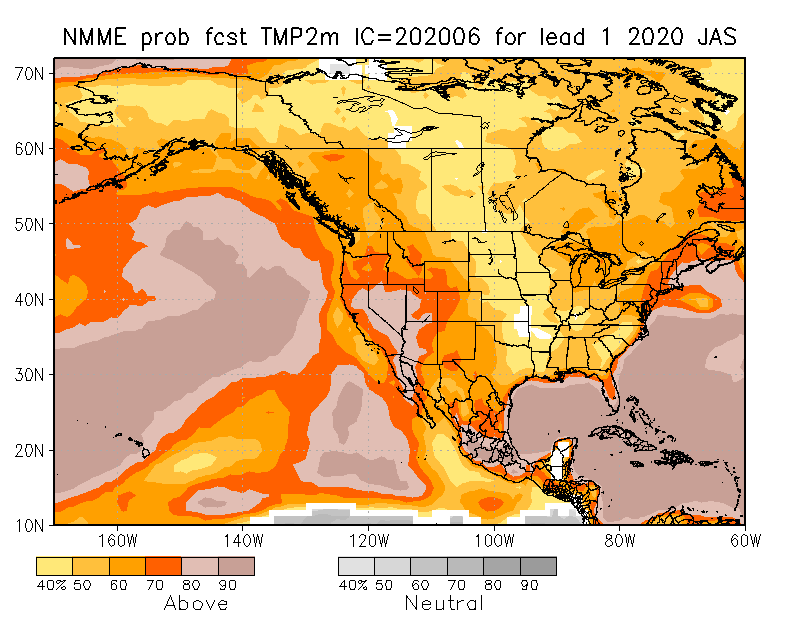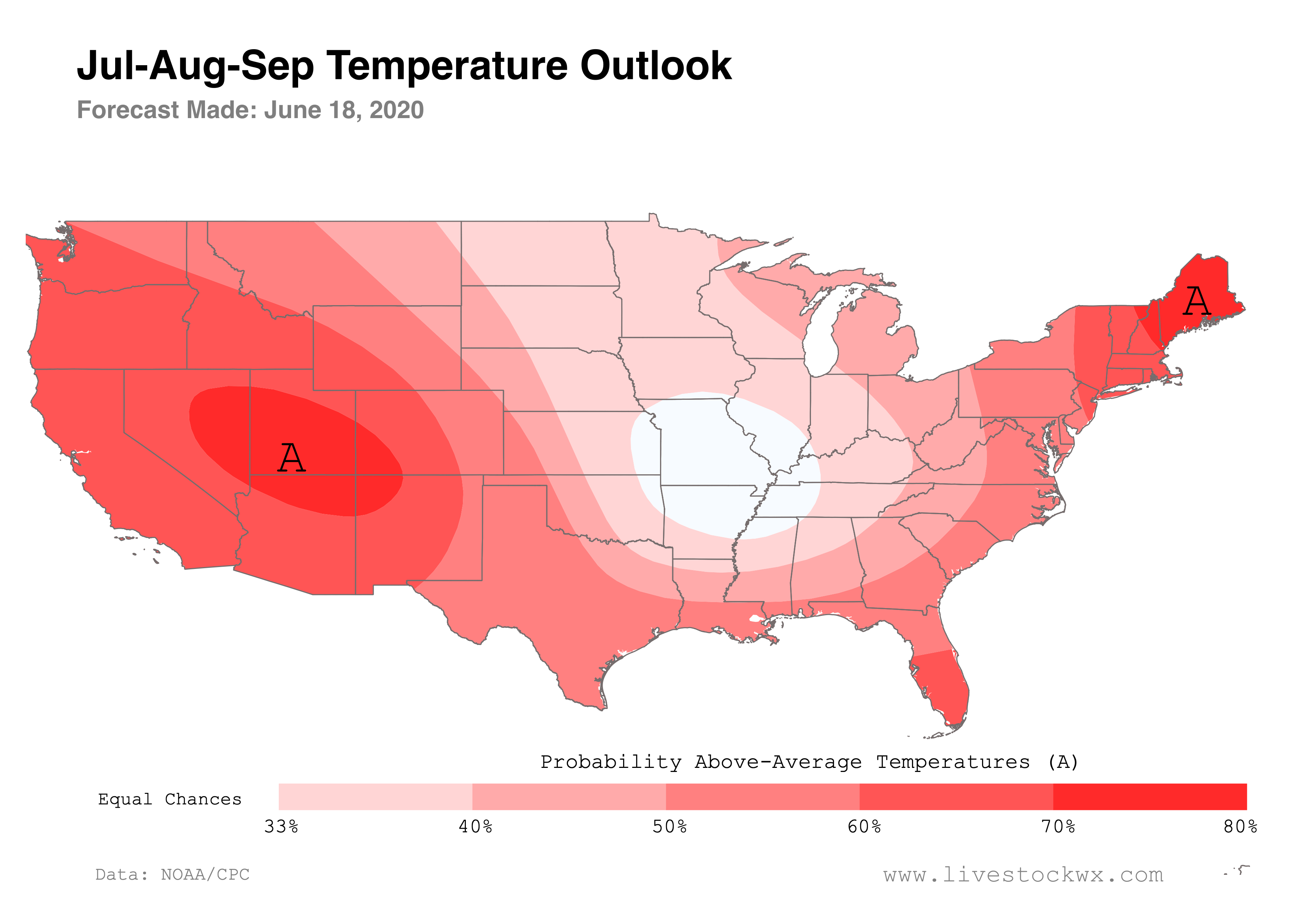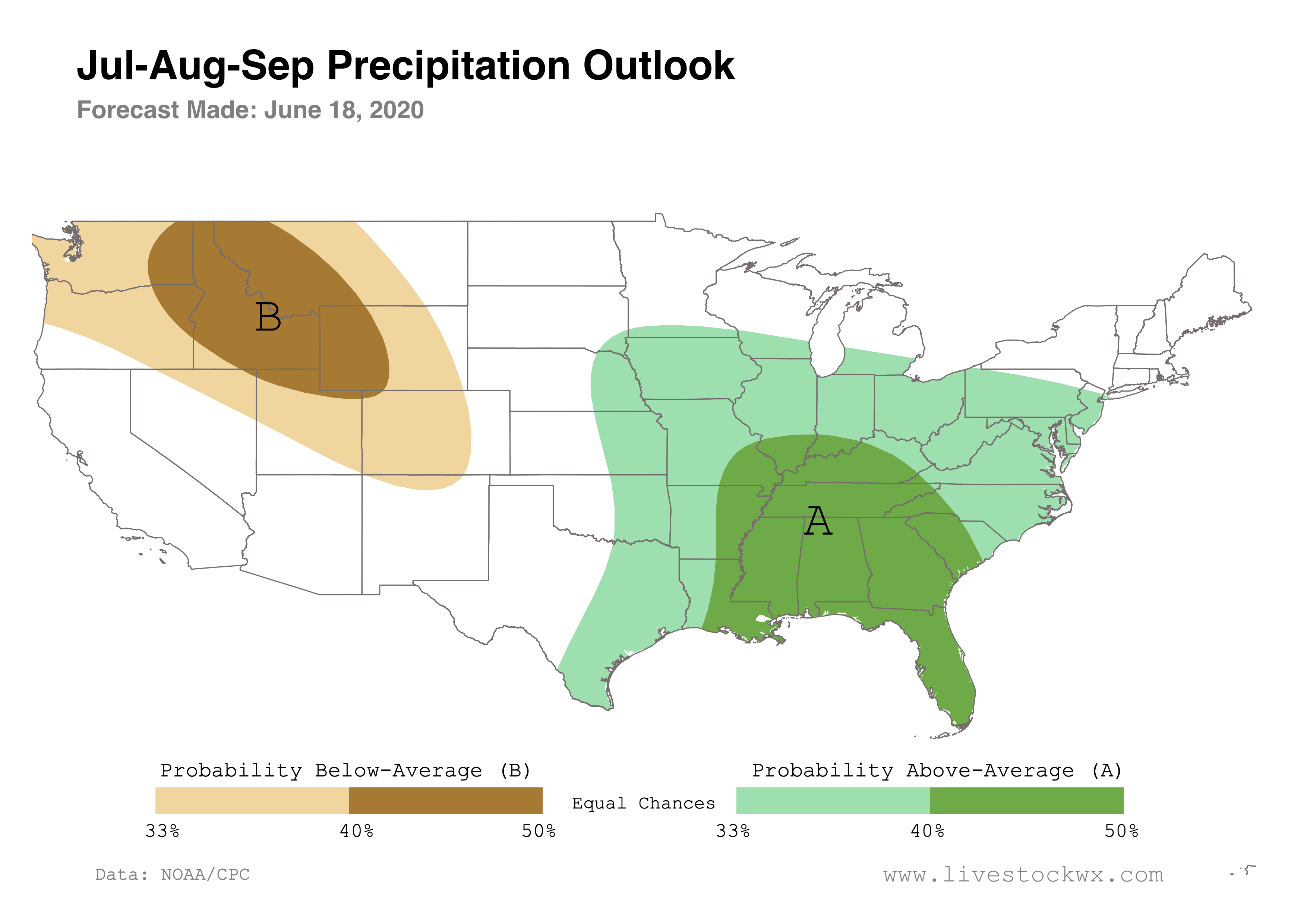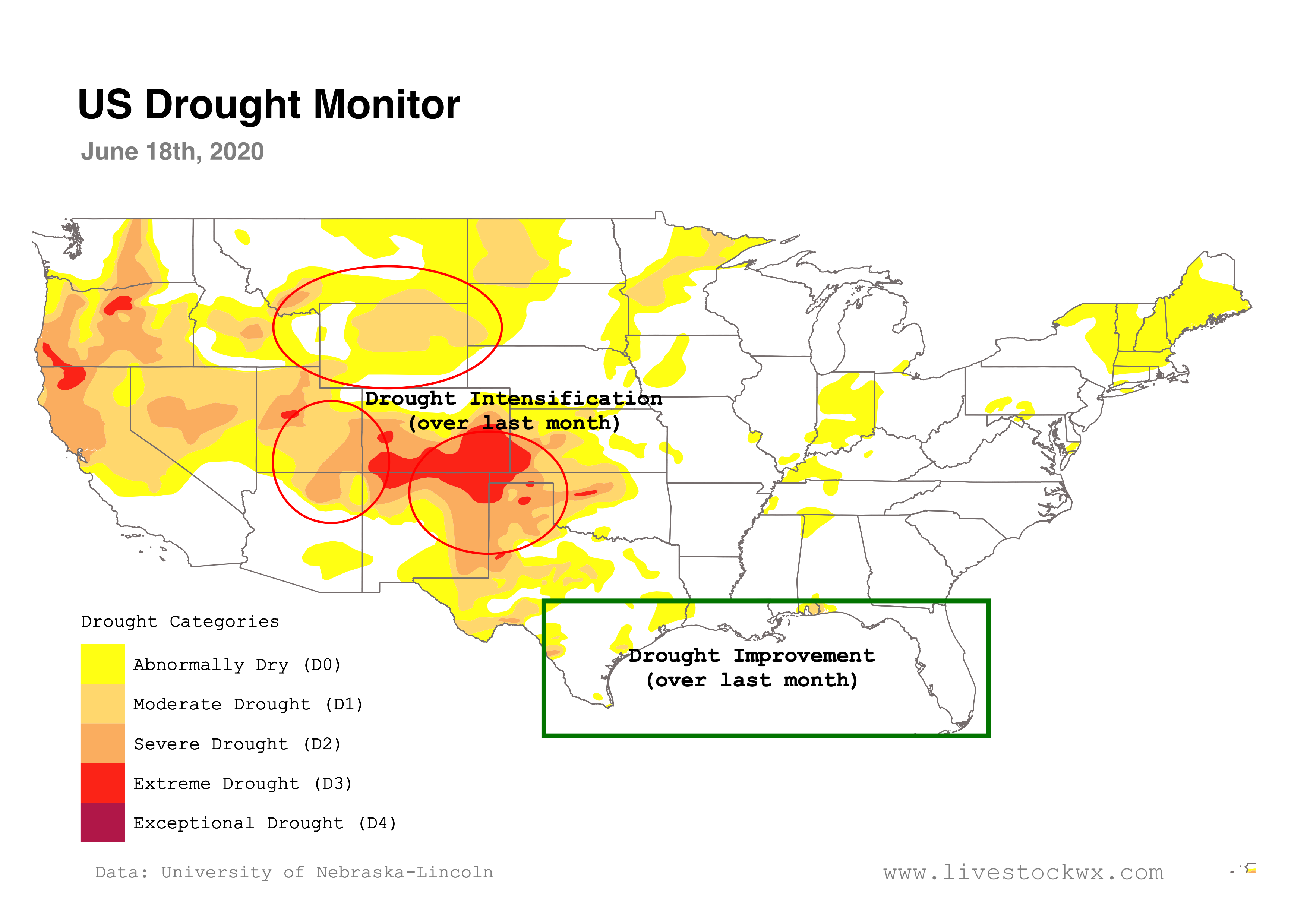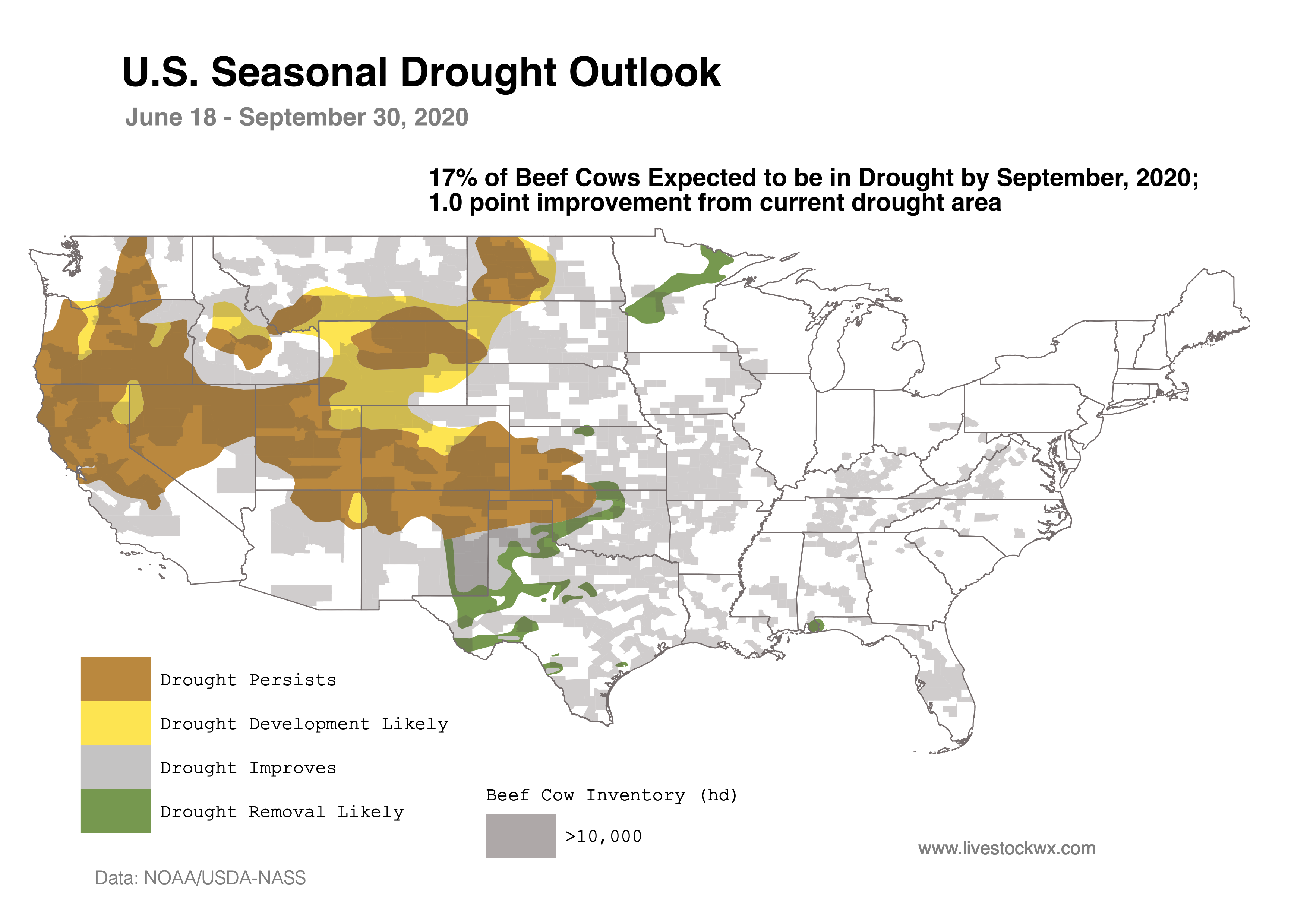Livestock Wx
NOAA Releases its Seasonal Outlooks: Hot for Most of the Country through September; Drought Expected to Expand in the West
- livestockwx
- June 19, 2020
- 4:02 pm
Note: The North American Multi-Model Ensemble (NMME) is an experimental multi-model seasonal forecasting system consisting of forecast models from several US modeling centers along with Canada's Meteorological Centre.
Last week we saw the release of the seasonal outlooks from the North American Multi-Model (NMME) Ensemble modeling effort. This week–like most weeks following the release of the NMME forecasts–NOAA put out their official seasonal outlooks. The NOAA Outlooks are somewhat anti-climatic, though, since their hand is usually tipped since they also use out from the NMME and you can usually get a good idea what the official outlook will look like a week ahead of time.
For comparison purposes we’ve included the NMME Jul-Aug-Sep Outlook maps next to the maps Livestock Wx produced using the NOAA official forecast data.
The temperature outlook Jul-Aug-Sep predicts fairly strong odds of above normal temperatures for most of the lower 48 states, with the one exception being parts of the Central Mississippi Valley, where there are very little signs of either a warmer or cooler than normal Jul-Aug-Sep.
The Jul-Aug-Sep precipitation outlook indicates a tilt in the odds of above normal precipitation for much of the eastern part of the country starting from parts of the eastern Great Plains. For much of the Pacific Northwest, the Northern Rockies, and extending southeastward into the Central Rockies, parts of the northern Great Basin, and northeast regions of the Four Corners region there is a tilt in the odds of below normal precipitation over the next three months. Equal chances of below, near and above normal precipitation are indicated for areas of the Southwest CONUS, the western Great Plains, the Upper Mississippi Valley, the Great Lakes region, and the Northeast.
Jul-Aug-Sep Drought Outlook
Excerpt from Drought Outlook Narrative–Drought coverage rapidly developed and intensified across the southern Great Plains and eastern New Mexico since May (see map below), due to insufficient rainfall, above normal temperatures, and periods of enhanced winds.
Improvement or removal is slightly favored for parts of Oklahoma and northwest Texas due in part to an expected increase in rainfall during the latter half of June. Farther to the west across the Texas Panhandle and eastern New Mexico, that improvement is related to a relatively wet climatology, associated with the Southwest Monsoon. Nearly half of the annual precipitation typically occurs during July-August-September across eastern New Mexico. Drought is likely to persist and expand across the West and northern to central High Plains through the summer. A major factor in the drought expansion is the likelihood of above normal temperatures during the outlook period.
Drought, Beef Cows, and Corn
Drought is not expected to develop across the Corn Belt and Midwest over the next three months, however, it doesn’t mean a shorter-term flash drought could develop given the higher than normal temperatures expected through September.
For beef cows, approximately 18% of the beef cow inventory is currently in drought based on the U.S. Drought Monitor. Looking back at NOAA’s May-Apr-Jun Seasonal Drought Outlook, around 10% of the beef cow inventory was expected to be in drought by the end of June. The forecast missed the mark by about eight percentage points. The reason has to do with the rapidly developing drought in southeast Colorado, the Texas and Oklahoma Panhandle and the more recent drought development in Wyoming and Montana.
Looking at the current Seasonal Drought Outlook, approximately 17% of beef cows are expected to be in drought by the end of September, which is about a one percentage point improvement from our current situation. The reason for the improvement is due to expected drought improvement in parts of Oklahoma and the Texas’ South/Rolling Plains.
